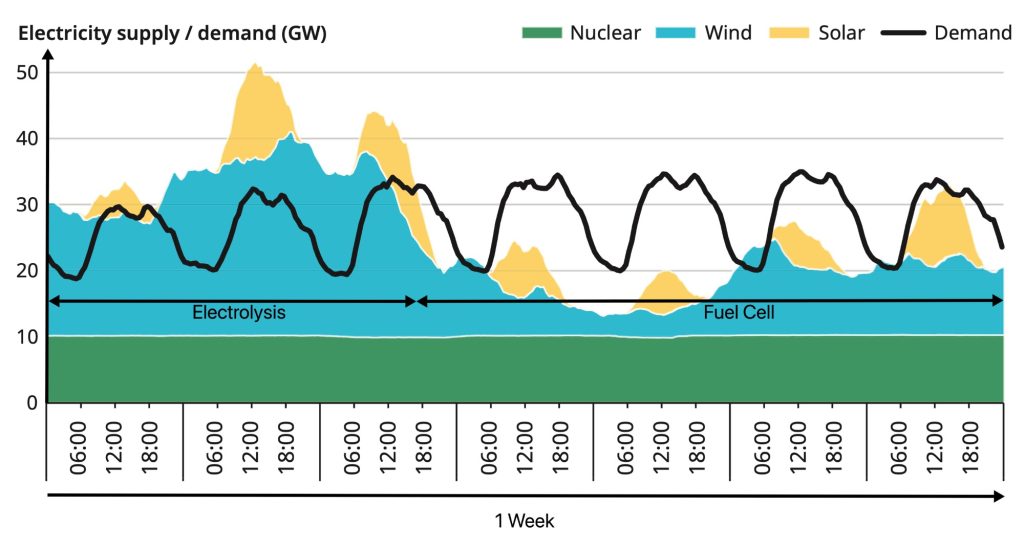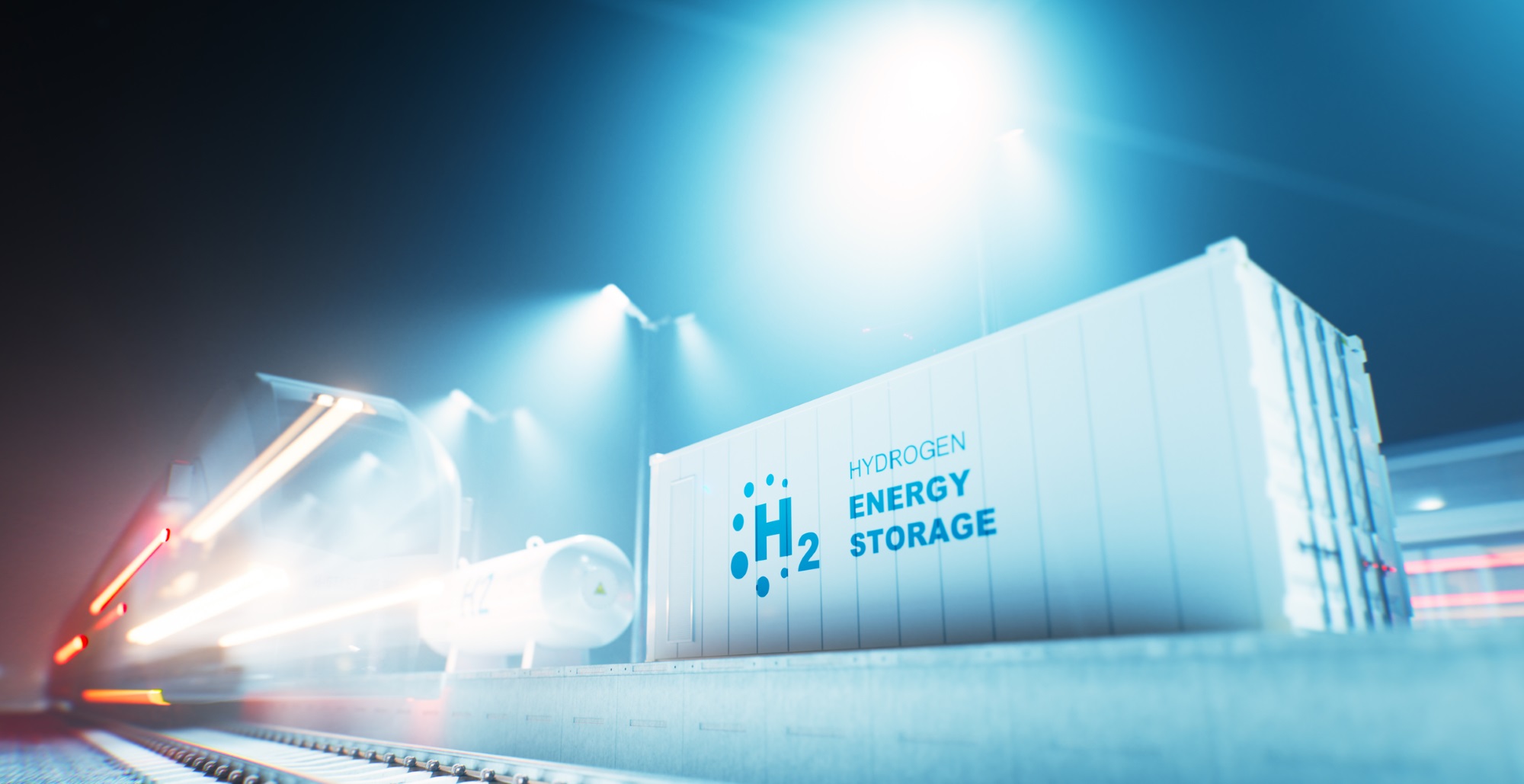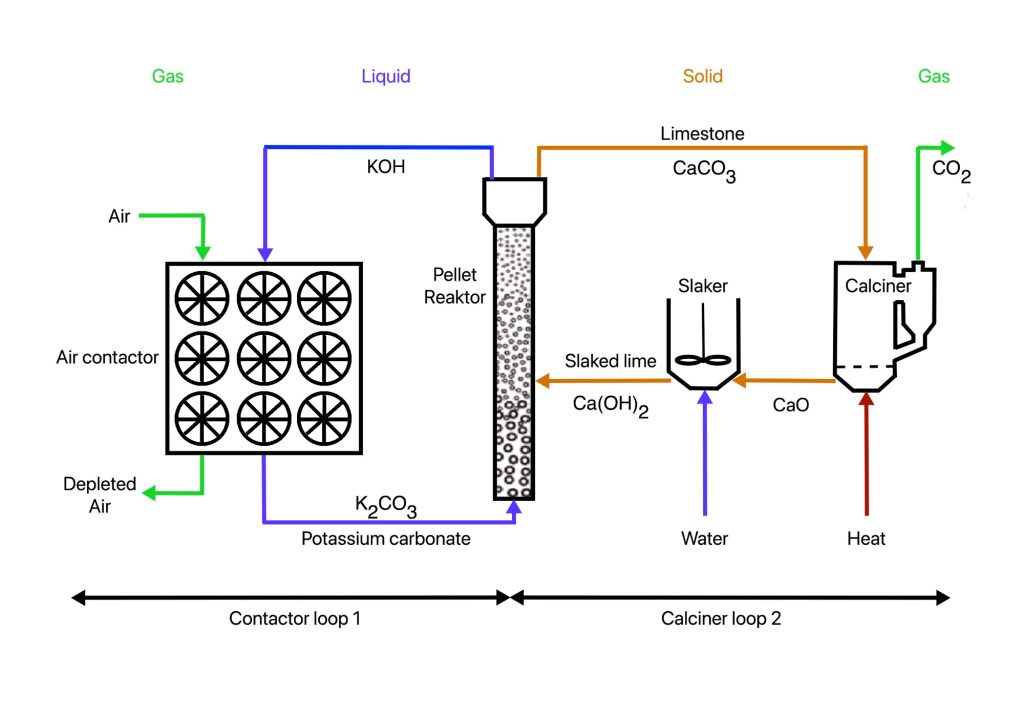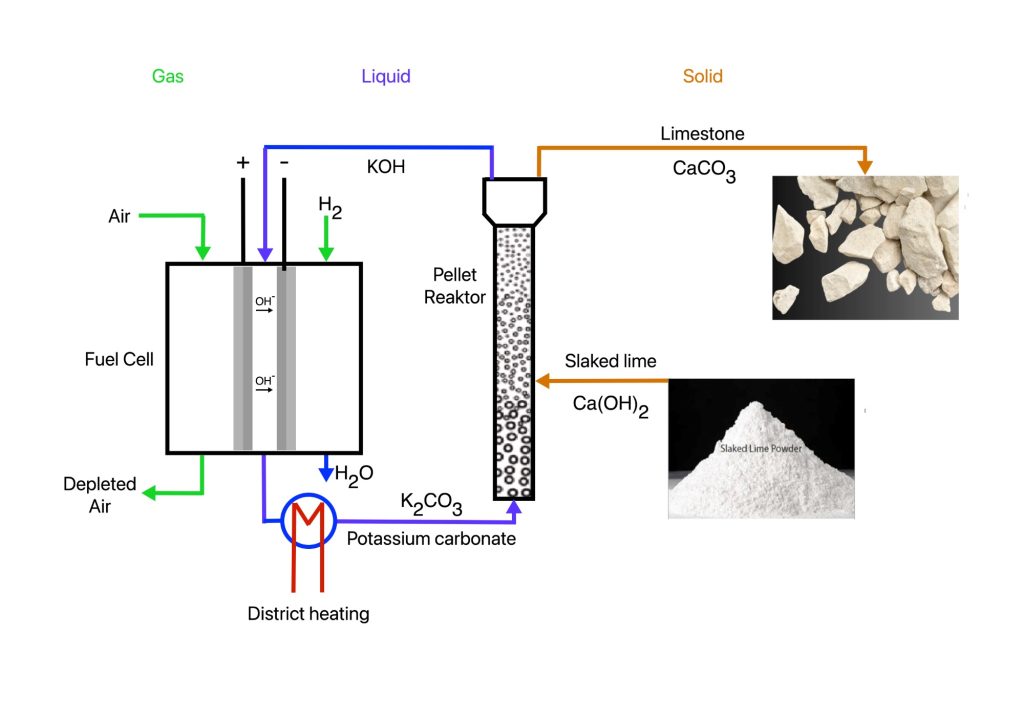The renewable energy challenge
Renewable energy sources such as solar and wind have become the cheapest form of energy generation. However, their intermittent nature poses a significant challenge to grid stability. Nuclear power, while stable, cannot be easily ramped up or down to meet fluctuations in supply and demand. As shown in Figure 1, which illustrates electricity supply and demand in Great Britain during the first week of July 2020, there were several days of surplus generation followed by periods of deficit. This imbalance highlights the need for large-scale energy storage solutions to buffer the intermittency of renewable energy generation.

Hydrogen as a long-term storage solution
Hydrogen is uniquely suited to meet this challenge, particularly for long-term seasonal storage. Figure 2 illustrates how hydrogen can store large amounts of energy, making it a viable option for large-scale storage. Storing hydrogen in underground caverns is also the most economical method, with costs ranging from $20 to $100 per MWh, compared to the exorbitant costs of battery storage, which can range from $100,000 to $200,000 per MWh.
AFC’s legacy and limitations
The alkaline fuel cell (AFC), invented by British engineer Francis Thomas Bacon, is the most effective fuel cell technology. AFCs use hydrogen and pure oxygen to generate electricity, heat, and water, with efficiencies of around 70%. NASA adopted AFC technology for its space programmes in the 1960s, relying on it for the Apollo and Space Shuttle missions.
One of the key advantages of AFCs is that they do not rely on rare earth metals or per- and polyfluoroalkyl substances (PFAS), both of which are becoming environmental concerns in other fuel cell technologies. AFCs have a simple design that enables long operating life, making them well suited to long-term energy storage. However, AFCs face challenges when using air as a source of O₂. Air contains small amounts of CO₂, which reacts strongly with the KOH electrolyte to form potassium carbonate (K₂CO₃). The gradual conversion of KOH to K₂CO₃ reduces both the efficiency and lifetime of the system.
Direct Air Capture (DAC)
Liquid Direct Air Capture (L-DAC) uses the strong affinity of KOH for CO₂ to capture the small amount of CO₂ in the air. Figure 3 illustrates how the contactor loop captures CO₂, resulting in the formation of potassium carbonate (K₂CO₃). In the pellet reactor, this K₂CO₃ is reacted with slaked lime to regenerate KOH, which is returned to the air contactor. The limestone produced is transferred to contactor Loop 2, where the CO₂ is released by heating the limestone at high temperatures (800°C to 900°C), completing the cycle. The pellet reactor acts as an interface between Loop 1 and Loop 2, facilitating the continuous process of capture and regeneration.
DAC-FC system integration
ShipTown has pioneered the integration of alkaline fuel cells (AFC) with direct air capture (DAC) technology to create the DAC-FC (Direct Air Capture Fuel Cell). This system efficiently addresses CO₂ capture by utilising the reaction between slaked lime and CO₂ to produce limestone. The resulting limestone is easy to handle and store, or it can be recycled back into slaked lime, making the process even more sustainable. By incorporating this process into the DAC-FC, the system solves the CO₂ problem, as the regeneration of potassium hydroxide (KOH) and the production of limestone form a continuous closed loop. This innovation offers high efficiency, a simple design, affordable and abundant raw materials, long operating life, and a negative carbon footprint.
The H-Battery: a multifunctional energy solution
On this basis, we have developed the H-Battery, which combines the capabilities of AFC and DAC into a single reversible system. The H-Battery performs three critical functions: generating electricity from hydrogen, producing hydrogen from electricity, and capturing CO₂.
Key specifications of the H-Battery
The H-Battery achieves remarkable performance metrics, including:
- Electrolysis efficiency: ~90% electricity-to-hydrogen conversion, with ~5% waste heat recoverable as process water
- Fuel cell efficiency: ~70% hydrogen-to-electricity conversion, with ~25% waste heat recoverable as process water
- Water use: 270 litres of clean water per MWh, stored and reused
- Plant efficiency: A combined >50% round-trip efficiency, plus waste heat and CO₂ capture benefits
- CO₂ capture: At least 80%, with a capture rate of 12 tonnes of CO₂ per year for a 1-MW system running at full load as a fuel cell
- Operating costs: €35 per tonne of CO₂ captured, with OPEX of €300 per MWh for heating
- Material use: 19 tonnes of slaked lime per year for a 1-MW system running 100% as a fuel cell, resulting in 31 tonnes of limestone by-product (storing 440g of CO₂ per kg of limestone).
- CO₂ capture efficiency: 1.4 g/kWh to 14 g/kWh (standard to optimized DAC version)
H-Battery electrolysis efficiency
The electrolysis process achieves ~90% efficiency by eliminating bubbles in the electrolyte. This is a key advantage of the H-Battery design, which benefits from the same triple-point phenomenon that enables efficient fuel cell operation. The absence of bubbles means that balance of plant (BoP) components, such as degassing tanks, are not required, nor are membranes, which are often a limiting factor in other systems. This not only increases efficiency, but also eliminates the need for PFAS, addressing a significant environmental concern.
Initial small-scale tests
Initial small-scale tests of the H-Battery have shown that it can operate without a membrane. This is crucial because membrane-based systems typically operate in the 80–90°C temperature range. The above results are based on 200 mA/cm², which is low compared to PEM and SOFC, but because the materials are relatively simple, the overall price is lower. High temperatures are the next step; as a rule of thumb, voltage decreases by 5 mV per degree, relative to 1.48V (HHV), meaning a 10-degree increase results in approximately 3% higher efficiency.
Applications of the H-Battery
The flexibility of the H-Battery opens up a wide range of potential applications across various different industries. Below are four key areas where the system can be used.
Energy storage and grid stability
The most immediate use of the H-Battery is as a large-scale energy storage solution for balancing renewable energy grids. With its ability to efficiently store excess energy and return it to the grid when needed, the H-Battery provides a critical buffer for intermittent renewable energy sources such as wind and solar. Its high efficiency in both electrolysis and fuel cell modes ensures minimal energy loss during storage cycles. This makes it particularly well suited to seasonal storage, where energy captured in the summer can be stored and used in the winter when renewable generation may be lower.
DAC-FC for ships
One of the most promising applications for DAC-FC technology is in the maritime sector. Shipping is responsible for around 3% of global CO₂ emissions, and the industry is under increasing pressure to reduce its carbon footprint. Hydrogen-powered ships, combined with on-board carbon capture, offer a compelling solution to this problem.
The DAC-FC system is particularly suited to this application because it can be integrated directly into a ship’s power system, using hydrogen as a fuel to generate electricity while capturing CO₂. Initial calculations suggest that it would be cheaper to run ships on hydrogen than on heavy fuel oil, making the DAC-FC a cost-effective option for the industry.
Infrastructure for remote energy production
Another important use case for the H-Battery is remote energy infrastructure. Hydrogen pipelines, which are significantly cheaper than DC grids (at 1/8 the cost), make it possible to locate renewable energy installations such as wind turbines and solar panels in remote areas where grid connections are expensive or impractical. The hydrogen produced at these sites can be transported to urban centres for use in electricity generation, heating, and even water production.
Energy security and redundancy
The H-Battery provides a high level of energy security by using hydrogen as a redundant energy source. Hydrogen-based energy systems are typically buried underground, providing protection and long-term storage for both short-term and long-term energy needs. This feature is particularly valuable for critical infrastructure such as hospitals, childcare centres, data centres, and other facilities that require a reliable and stable power supply. The ability to store hydrogen and convert it to electricity on demand ensures that these essential services can continue to operate even in the face of power outages or grid instability.
In addition, the H-Battery’s ability to buffer energy helps to stabilise these decentralised energy systems, allowing energy producers to smooth out the variability of renewable sources. This is particularly important in regions with high renewable energy potential but limited grid infrastructure.
Comparative energy storage models: PyPSA-Eur, Ninja, and StoreFast
Several models have been used to analyse the effectiveness of different energy storage solutions, and in all of them, the H-Battery consistently emerges as a top contender. Three key programmes – PyPSA-Eur, Ninja, and StoreFast – provide compelling evidence of the H-Battery’s potential to revolutionise the energy market.
1. PyPSA-Eur (EU Data Model)
Aarhus University carried out simulations using the PyPSA-Eur model, focusing on energy storage in Europe up to 2050. This model showed that the H-Battery, especially in its DAC-FC configuration, could effectively displace Open Cycle Gas Turbines (OCGT) from the market. The simulation predicted a market potential of 120 GW for the H-Battery, growing towards 200 GW as the price per kW drops from €1,000 to €750. These results highlight the scalability of the H-Battery and its ability to capture significant market share as it becomes more cost-competitive.
2. Ninja (UK Data)
The Ninja programme, which analysed energy storage needs in the UK (see Figure 5), further supports the case for the H-Battery. This model concluded that the H-Battery outperformed other solutions for back-up requirements over four hours, making it the optimal choice for long-term energy storage. The fast response time of the H-Battery – from charging to discharging – makes it a natural choice for providing grid stability. In scenarios where backup requirements extend beyond four hours, the H-Battery’s versatility eliminates the need for additional storage solutions.
3. StoreFast (US Data from NREL)
The StoreFast model of the National Renewable Energy Laboratory (NREL) in the US examined storage scenarios across a range of technologies (see Figure 6). Although the H-Battery was slightly outperformed by OCGT without carbon capture in some cases, it still emerged as one of the leading technologies, particularly for regions where natural gas prices are higher, such as the EU (3–5 times the US). The StoreFast simulation also highlighted the benefits of using H-Battery storage in salt caverns and pipelines, adding to its flexibility in different storage environments.
These three models all point to the same conclusion: the H-Battery is the most effective and cost-efficient solution for long-term, large-scale energy storage. As the technology matures and costs fall, it will play an increasingly important role in stabilising renewable energy grids around the world.
Conclusion
The H-Battery offers a versatile, efficient solution to the challenge of storing renewable energy. Its ability to seamlessly switch between fuel cell and electrolysis modes, coupled with its high efficiency, makes it a transformative technology for stabilising renewable energy grids. By providing a reliable means of energy storage, the H-Battery could lead to energy systems that are independent of fossil fuels, paving the way for a sustainable and secure energy future.
About the author

Karsten Schibsbye is the founder of ShipTown A/S and a seasoned innovator in renewable energy technologies, holding over 50 patents across wind energy, hydrogen systems, and automation. His extensive experience includes pivotal roles at Green Hydrogen Systems and Stiesdal Hydrogen, where he contributed to the development of state-of-the-art hydrogen technologies. Now, through ShipTown, Karsten focuses on creating stable, sustainable energy and carbon capture solutions, and the company is ready to welcome interest from investors to help bring these technologies to market.







